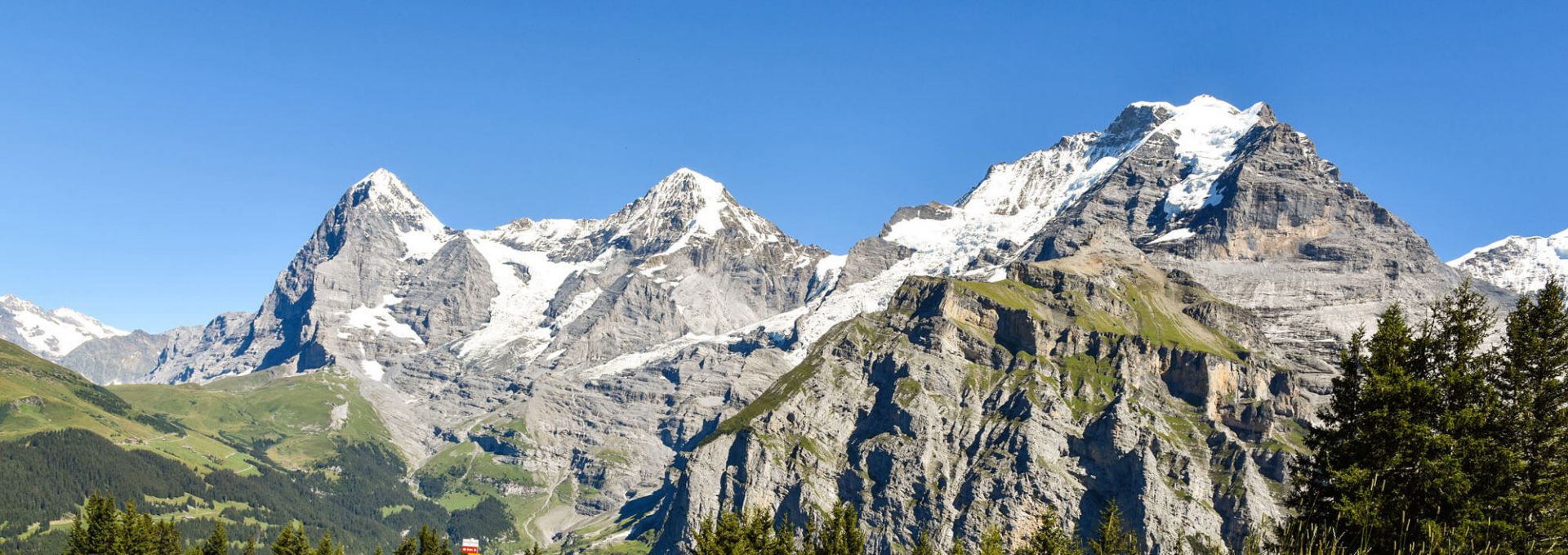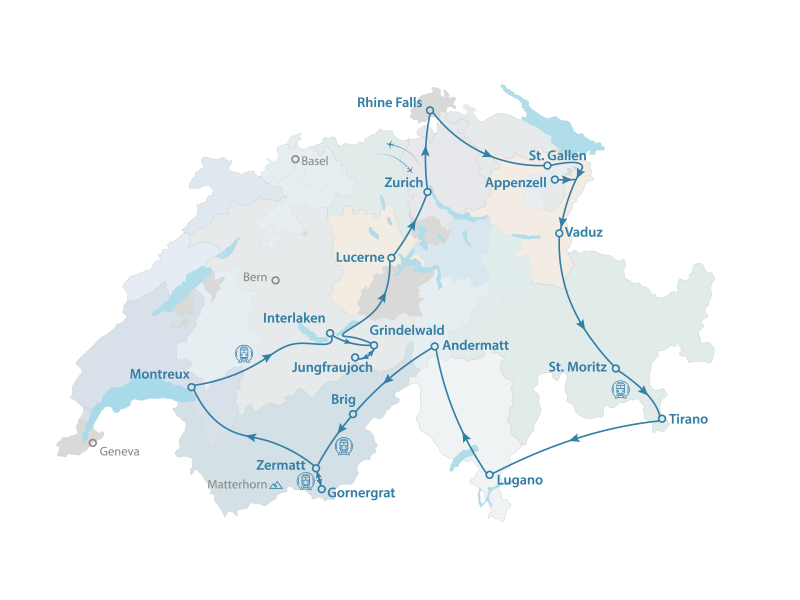
Swiss Climate: Temperate Climatic Zone, Foehn Wind, Precipitation in Lowlands and Highlands
Climate
Switzerland is situated in a temperate climatic zone. There are no extremely cold winters or extremely hot summers. Thus, the Swiss temperature is moderate and generally agreeable. However, the weather and climate change in Switzerland can be very different depending mainly on the altitude.
The climate in the western and north-western parts of the country is mostly influenced by the Atlantic Ocean. Westerly directions deliver a mild, humid sea breeze to Switzerland. The southern part is mainly influenced by the Mediterranean Sea.
The Alps play a great role in climate formation. They not only divide the country into a number of different climatic zones but also play a role of natural barrier between northern and southern parts of the country.
The average amount of precipitation in the northern part is about 2000 mm per year. While in the South, it is between 500 and 600 mm per year. The amount of precipitation is much higher during summer.
Already from the altitude of 1200-1500 m above sea level, precipitation on winter months occurs as snowfall. However, in lowlands (some low-lying western parts, Greater Geneva area, and Basel area) winters without a layer of snow is not an unusual thing.
Swiss weather has its specialties: as a special climatic feature Foehn wind is differentiated. Foehn usually occurs during autumn and spring. It crosses the Alps bringing mild and dry conditions.
The seasons also vary greatly, however, in recent years some changes are already noticeable. Formerly the winters were cold and snowy. However, now this is not a rule especially for lowlands. Besides, nowadays many ski resorts can hardly survive without using any artificial snow. In spring the trees blossom and nature gets green, but anomalies like snowfall in April are not exceptions. Summer temperature usually is up to 30°C, but sometimes it can be exceeded if the summer is extremely hot. In autumn already, fruits ripen and nature gets various color preparing for winter.
Depending on the altitude, the temperature range may vary. We highly encourage the visitors to pack a sweater, good walking shoes or boots, sunscreen, sunglasses, a compact umbrella or a light raincoat.
During two weeks in Middle-December, when Christmas slowly approaches, it gets lively in the big cities of Geneva, Zurich, Lucerne and Bern. December is perfect for spending your Christmas or New Year holidays with friends or family in Switzerland.
The winter high season (January/February) is highly recommended for those, who love snow sports, winter activities and cozy trips in snow-covered cities. These are the real winter months. It is pleasantly cold, and the days become shorter.
Summer, just like winter, is also popular among tourists that visit Switzerland. Summer high season usually lasts from July to August, when the days are warm. Although some days can be too hot for some outside activates, such as city tours, the lovers of sun will still enjoy paragliding, views from the peaks, biking and other sports.
Any time is a perfect time to visit Switzerland. Just make sure to be well prepared, and you will surely have a wonderful journey regardless the time of year.


